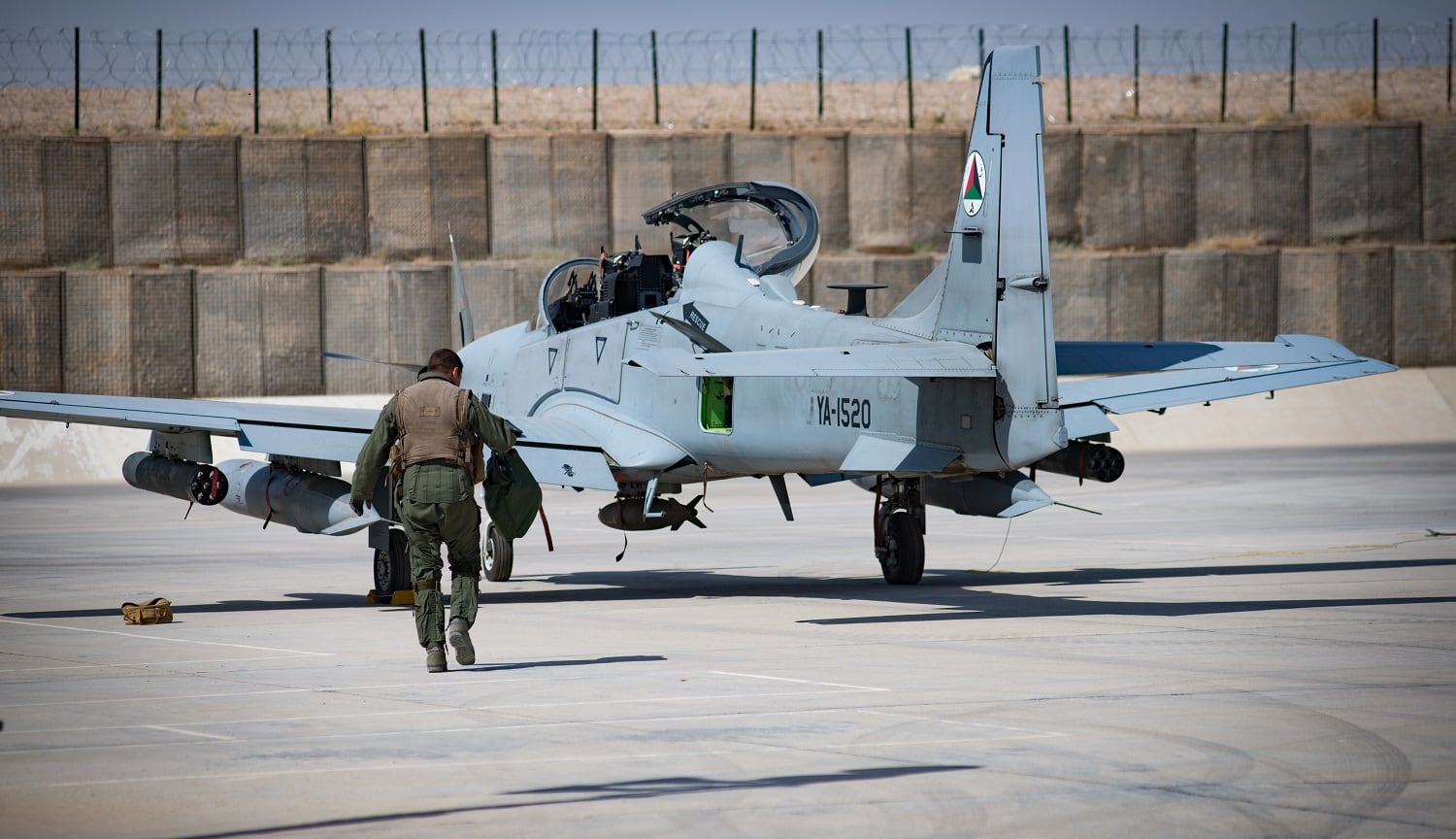After more than three years, the A-10 Thunderbolt II arrived in Afghanistan, landing at Kandahar Airfield on Jan. 19, U.S. Air Forces Central Command announced Tuesday.
The coveted close-air support platform — commonly called the “Warthog” — is back downrange to support U.S. advisers who are beginning to embed with Afghan forces closer to the front lines.
“As U.S. advisers move closer to the front lines in support of our Afghan partners, this additional airpower will give them the decisive advantage necessary to advance with confidence,” said Lt. Gen. Jeffrey Harrigian, commander of U.S. Air Forces Central Command, in a press release.
A task force of roughly 300 Marines deployed to Afghanistan’s volatile Helmand province will be among the forward-deployed advisers benefiting from the A-10’s arrival.
The new task force is intended to advise Afghan forces at the kandak, or battalion, level. Advise-and-assists missions were previously limited to the brigade level and above, officials said.
Also deploying this spring to Afghanistan is the Army’s 1st Security Force Assistance Brigade, a new and specially trained unit of military advisers.
The return of the A-10s is also intended to support the increased need for precision strikes against Taliban financing ventures, such as narcotics processing labs.
“As we’ve applied increased pressure on the Taliban and their revenue sources with precision air power, we’ve gained considerable momentum in our effort to force them to reconcile or face defeat,” Harrigian said.
Since November, the airstrikes conducted against Taliban narcotics production facilities cost the Taliban more than $20 million, according to AFCENT figures.
Despite those strikes, Maj. Gen. James Hecker, commander of NATO Air Command-Afghanistan, said that “the Taliban still has not felt the full brunt of American and Afghan air power.”
“With the arrival of new air assets and the growing capabilities of Afghan pilots, the Taliban will have a constant eye towards the sky,” he added.
These new A-10s are coming from the 303rd Expeditionary Fighter Squadron based out of Whiteman Air Force Base, Missouri, according to AFCENT.
In addition to the arrival of the A-10s, AFCENT has also shifted MQ-9 Reapers and HH-60G Pave Hawks to Kandahar Airfield from other deployed locations in U.S. Central Command’s area of operations.
The Reapers will be able to provide armed over-watch and intelligence, surveillance and reconnaissance for forward-deployed troops, while the Pave Hawk helicopters will increase personnel recovery and search and rescue operations, according to AFCENT.
Along with a detachment of KC-135 Stratotankers that have flown from Kandahar since September, the A-10s, MQ-9s and HH-60G will complement F-16s, C130J, EC-130H and other coalition aircraft operating out of Bagram Airfield.
In addition to the U.S. air support, the Afghan Air Force is planning to more than double their fleet of aircraft over the next seven years, according to AFCENT.
RELATED

Plans include the introduction of AC-208 combat caravan aircraft and UH-60 Black Hawk helicopters, as well as more A-29 light-attack aircraft and MD-530 light-attack helicopters to the Afghan air fleet already conducting airstrikes in country.
“The growing Afghan Air Force is vital to the success of [the Afghan National Defense and Security Forces] on the battlefield,” said Maj. Gen. Mohammad Shoaib, commander of the Afghan Air Force, in a press release.
“The success of the Air Force is key to tipping the battlefield in favor of ANDSF. The Afghan Air Force is successfully fighting and growing at the same time increasing attack capabilities while delivering daily blows to the Taliban,” Shoaib said.
Kyle Rempfer was an editor and reporter who has covered combat operations, criminal cases, foreign military assistance and training accidents. Before entering journalism, Kyle served in U.S. Air Force Special Tactics and deployed in 2014 to Paktika Province, Afghanistan, and Baghdad, Iraq.




